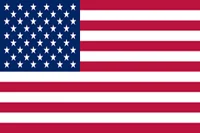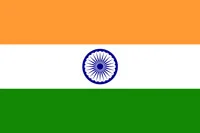Market Introduction
The global luggage & bags market is poised to gain significant traction, valued at approximately USD 22.83 billion in 2024. With an expansion of CAGR 5.87% and reaching USD 36.04 billion in 2033, the market is mainly influenced by evolving consumer lifestyles, increasing travel and tourism, and the ever-growing fascination among people for fashionable, functional bags. This includes luggage and bags that are not limited to their utilitarian use; they have turned into style statements and multipurpose tools. The rising demand for light, tough, as well as eco-friendly materials is changing the face of the market. This report delves into a detailed analysis of market trends, segmentation, regional dynamics, competitive landscape, and future projections.
Key Drivers of the Global Luggage & Bags Market
The luggage and bags market is expanding due to changing consumer preferences and increased needs for versatile, durable, and light travel equipment. The growth drivers in the country are more in urbanization and increased trips both within the country and abroad. Leisure and business tourism are also on an increase. In addition to these, the proliferation of e-commerce platforms has widened the scope of accessibility in terms of providing a wide range of choices at various price levels suitable for each segment. This shift has led manufacturers to directly adopt consumer-to-factory models and omnichannel strategies to enhance customer experience. The influence of fashion trends also brings sustainable materials into the innovation process, such as recycled plastics, targeting the environmentally conscious consumer.
Challenges remain, including market saturation in mature economies and severe competition from counterfeit products, which further erodes the brand value and profitability of the key players. Additionally, the fluctuating raw material costs, such as leather and metal, impact pricing tactics and operating margins. The demand is bouncing back post-COVID-19, with the uptick in demand seen, particularly for compact luggage being synonymous with budget-conscious travel. Companies are harnessing technologies such as the inclusion of smart luggage, complete with GPS trackers, USB ports, and biometric locks, with the tech-savvy consumers. The fastest growth is expected from emerging markets in Asia-Pacific, Latin America, and the Middle East & Africa, where increasing numbers of middle-class populations and rising disposable incomes are driving local infrastructural developments, eventually boosting regional travel.
Market Segmentation:
|
Segmentation Criteria |
Sub-Segments |
Key Insights |
|
By Type |
Travel Bags, Business Bags, Backpacks, Handbags |
Travel bags dominate due to increased global tourism. Handbags see rising demand in fashion. |
|
By Material |
Polycarbonate, Fabric, Leather, Others |
Polycarbonate bags gain traction for durability and lightweight features. |
|
By Price Range |
Premium, Mid-Range, Economy |
Mid-range products lead due to affordability and quality balance. |
|
By Distribution Channel |
Online, Offline (Retail Stores, Hypermarkets) |
Online sales are surging, driven by convenience and expanded product options. |
|
By Consumer Type |
B2B, B2C |
B2C dominates with direct-to-consumer strategies, especially in urban areas. |
Regional Market Insights
Demand in North America particularly in the United States continues to grow, with high volumes of travel that are both domestic and international. Increasing disposable income is complemented by an increased air travel trend resulting in a demand for premium, durable, and technically equipped luggage products. E-commerce platforms have made it easier for consumers to find a range of luggage options, and this has augmented market growth. Factors such as increased travel restrictions, fuel cost volatility, and shifts toward minimalism and carry-on luggage are obstacles to the market.
The leisure and business travel sectors are among the driving forces behind the luggage and bag market in Europe, particularly in countries such as the UK, Germany, and France. Innovation in materials is being driven by a requirement for durable, lightweight, and sustainable products while consumer demand continues to shift towards luggage made from recycled or eco-friendly materials. Other boons are luxury travel, which is presently on an ascent; and greater international events and conferences-both are collaborating for the increasing demand in high-end bags and luggage. However, environmental sustainability concerns and strict regulations surrounding manufacturing practices are sending a pressure signal to the brands to follow more sustainable practices.
Asia-Pacific has become one of the fastest-growing regions for the luggage and bags market, mainly because of the enlarged middle class population, increased disposable income levels, and expanded travel industry. In recent years, countries like China, Japan, and India have seen an increase in not only domestic but also outbound traveling, directly increasing the demand for luggage and travel accessories. E-commerce growth, on the other hand, has been increasing rapidly in recent years, coupled with shifting consumer preferences for fashionable and functional luggage, particularly among millennials and Gen Z. Market growth in APAC, however, is being challenged by regional politics and economic fluctuations that affect consumer purchasing behaviors.
Regionally, the growing tourism sector in Latin America and the hike in travel demand within regional markets have been the prime influences on the luggage and bags market. Countries such as Brazil and Mexico are its major consumers, yet economic instability and changes in the currency may limit purchasing power, especially for premium luggage products. However, budget-friendly luggage options and regional travel will continue driving growth within the region.
The Middle East and Africa are coming on the back of large tourism industries with growing air travel, in the case of the UAE and Saudi Arabia, thereby giving a thrust for luxury luggage. A few regions, however, may experience difficulties in growth due to high import taxes as well as economic volatility.
Regional Analysis:
|
Region |
Key Trends |
Growth Opportunities |
|
North America |
Rising demand for smart luggage and fashion bags. |
Expansion of e-commerce platforms for bag sales. |
|
Europe |
Sustainability-focused consumer behavior. |
Opportunities in premium and eco-friendly luggage products. |
|
Asia-Pacific |
Growth in middle-class travel spending. |
Expansion in mid-range and economy segments with innovative features. |
|
Latin America |
Increased focus on affordable travel solutions. |
Growth in business bags for corporate travelers. |
|
MEA |
Tourism sector growth in GCC nations. |
Demand for premium luggage in urban areas and tourist hotspots. |
Competitive Landscape
High-end and premium brands like Samsonite, Tumi, Rimowa, and American Tourister command the market. They are well-known for their premium price, high-quality raw materials, and innovative designs catering to frequent travelers as well as business professionals. They also focus on incorporating smart features such as USB charging ports, lightweight materials, and durable materials like polycarbonate and aluminum to meet the requirements of the modern customers. These global players also use large networks of distribution, such as flagship stores, upscale department stores, and online sales platforms, to reach a very large customer base.
However, the market is also experiencing more competition from brands natively originating within e-commerce platforms. Away, Monos, and Nomatic are examples of brands that redefine expectations about style and functionality according to customers. The sales strategies and cost of these brands, directly selling to consumers while using high-grade materials and minimalist designs, attract the cost-conscious yet technology-enabled consumer: the young adult. They also focus on consumer feedback through social media, online reviews, and innovative product designs.
The competition scenario here also has local players in the emerging markets, including China and India and parts of Southeast Asia playing important roles. Local brands provide affordable options with designs that are unique and in line with preferences on local cultures and regional habits of traveling. With greater penetration of e-commerce platforms in these regions, local brands can tap into more extensive networks and thus compete very heavily with the global brands.
The popularity of collaboration and strategic partnerships is becoming increasingly popular among market players. For example, while brands are collaborating with tech companies and ensuring that products integrate smartness in features such as GPS tracking, weight sensors, and battery-powered USB ports. Moreover, brands have been found to explore cross-industry collaborations with luxury fashion brands, sports brands, and lifestyle companies in efforts to expand their appeal and diversify product offerings.
Market Trends and Innovations
- Sustainability: Growing adoption of recycled and biodegradable materials in luggage production to meet eco-conscious demands.
- Smart Luggage: Integration of technology like GPS tracking, biometric locks, and USB charging ports.
- Customization: Increasing trend of personalized bags with custom designs, colors, and sizes.
Future Outlook (2025-2033)
The global luggage & bags market is expected to witness steady growth as travel and tourism recover globally. Innovations in materials and smart features will continue to drive consumer interest, while sustainability will remain a core focus for manufacturers. By 2033, the market is anticipated to reach a valuation of USD 36.04 billion, with significant contributions from Asia-Pacific and Europe. Expansion in e-commerce platforms and demand for multi-functional bags will further propel market growth.
Objectives of the Study
The objectives of the study are summarized in 5 stages. They are as mentioned below:
- Global Luggage & bags size and forecast: To identify and estimate the market size for global Luggage & bags market segmented By Type, By Material, By Price Range, By Distribution Channel, By Consumer Type, and by region. Also, to understand the consumption/ demand created by consumers between 2024 and 2033.
- Market Landscape and Trends: To identify and infer the drivers, restraints, opportunities, and challenges for global Luggage & bags
- Market Influencing Factors: To find out the factors which are affecting the market of global Luggage & bags among consumers.
- Company Profiling: To provide a detailed insight into the major companies operating in the market. The profiling will include the financial health of the company's past 2-3 years with segmental and regional revenue breakup, product offering, recent developments, SWOT analysis, and key strategies.
Frequently Asked Questions
Request For Table of Content
Research Methodology
Multi-report Purchase Plan
A Customized Plan Will be Created Based on the number of reports you wish to purchase
InquireRelated Reports
Client Testimonials
“We value your excellent customer service, promptness in responding, flexibility in customizing reports, and pleasant manner in general. ”
June S. Lee - SBIC/SBP&T Co.,Ltd
“The study and the services provided by Econ Research have more than met my expectations. The study has good depth and breadth and was reasonably priced. Instant responses to my questions delighted me, and the project went off without a hitch. When I require information about a different industry to help my clients, Econ Research would be the first market research firm I would get in touch with.”
Dan Dybus - AlixPartners


